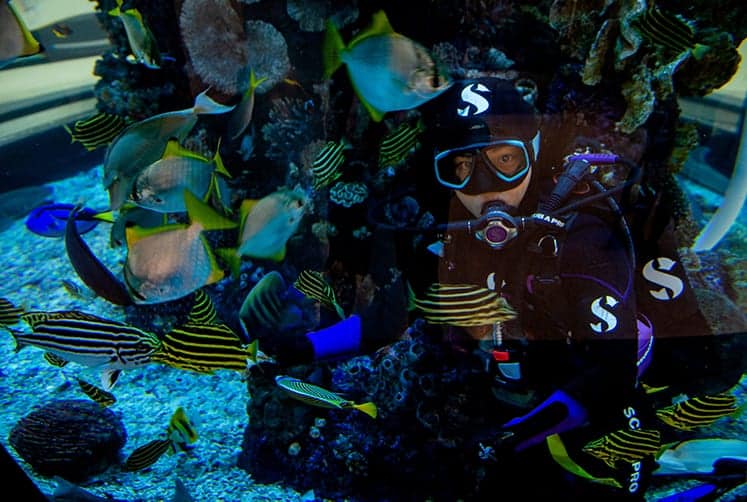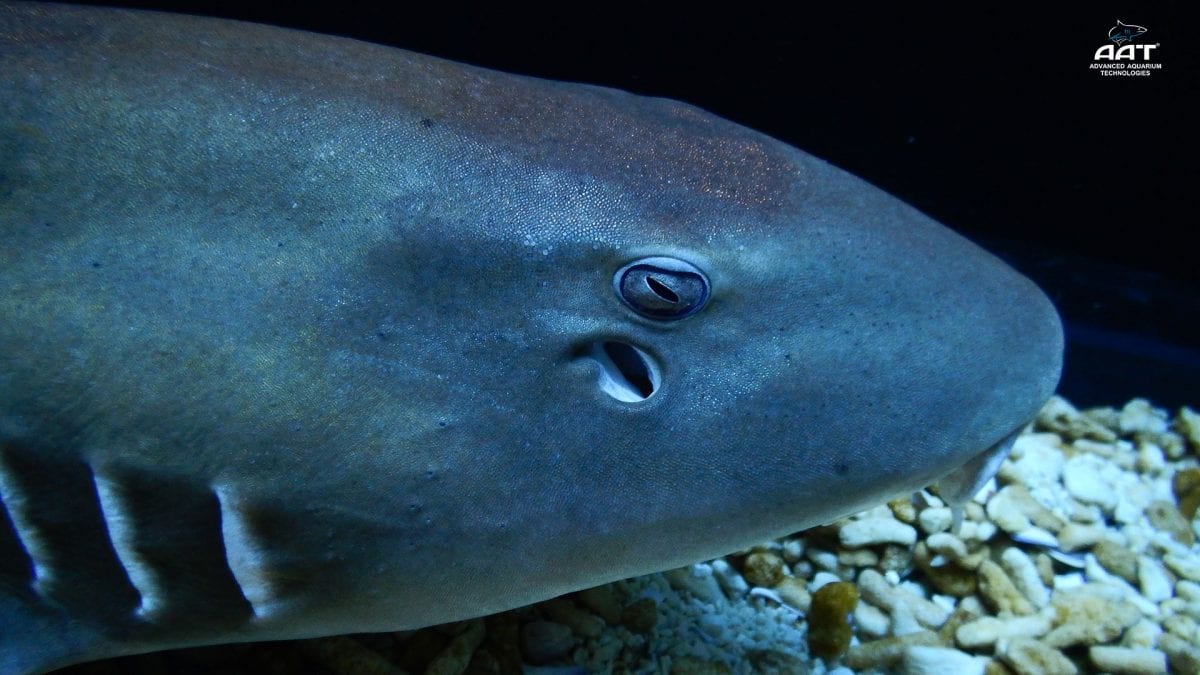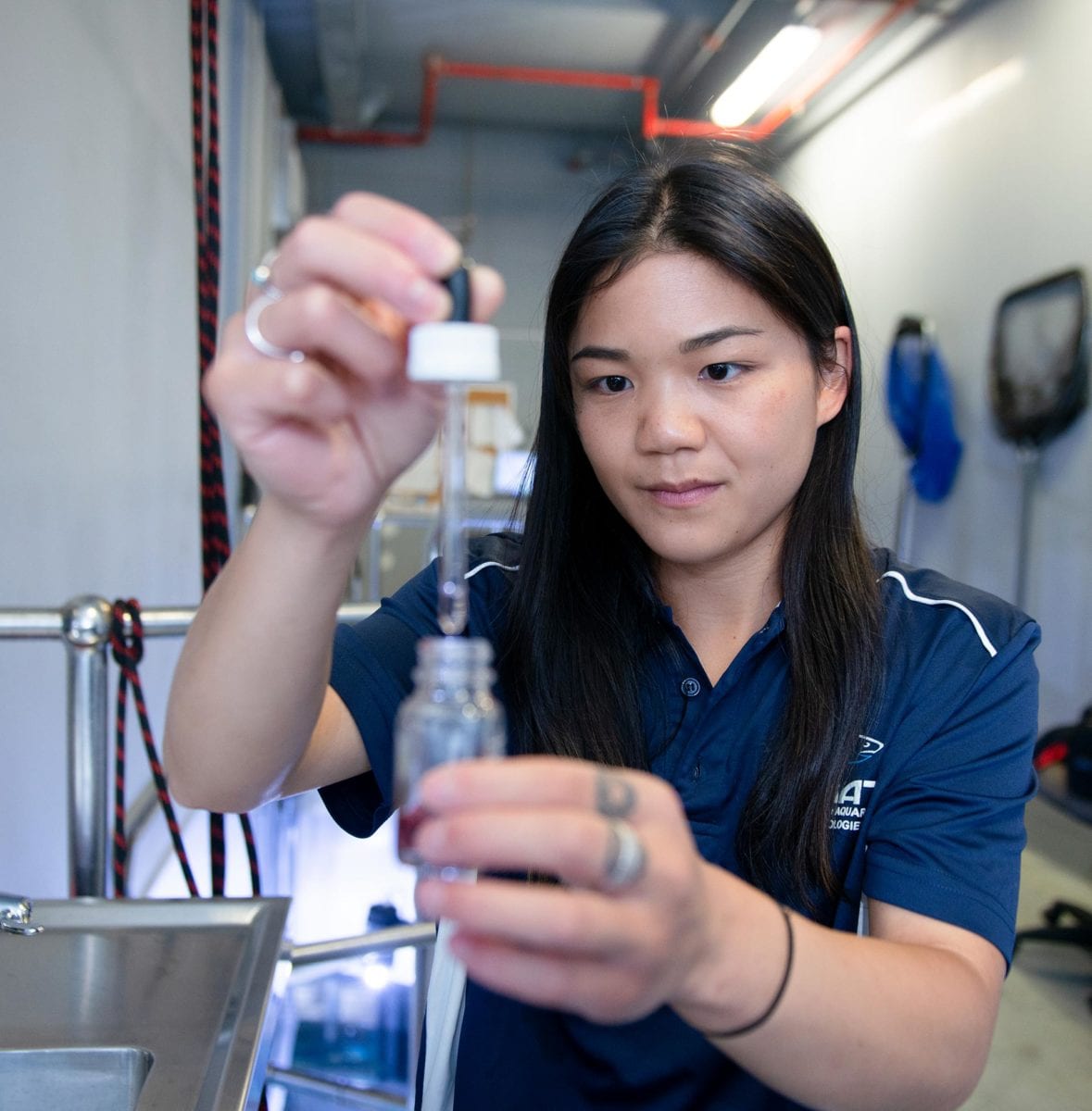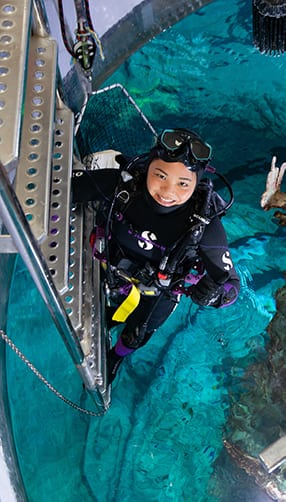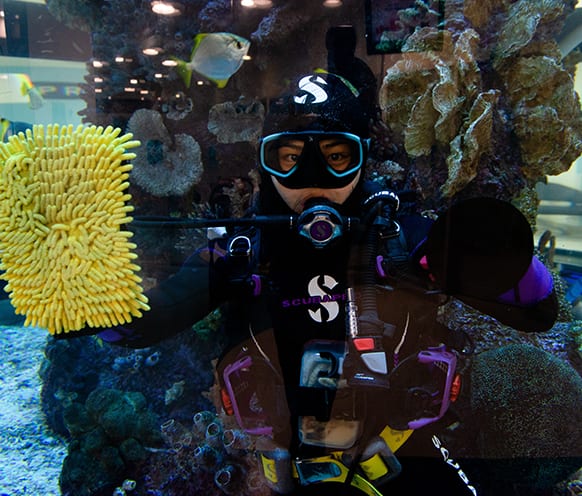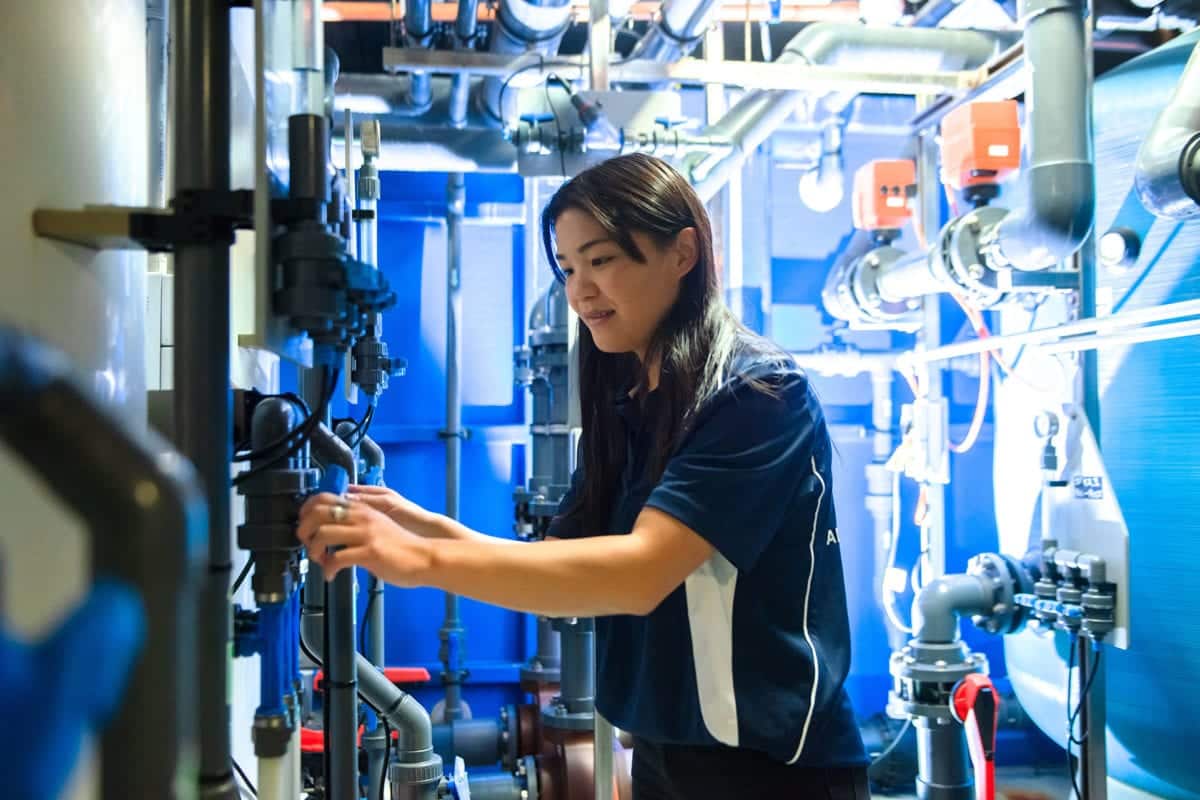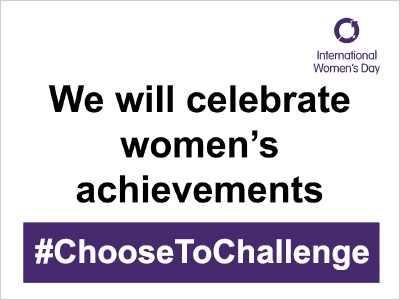On International Women’s Day, we celebrate women in the aquarium industry by interviewing Alison Liew, Managing Aquarist at the Royal Children’s Hospital aquarium in Melbourne, Australia.
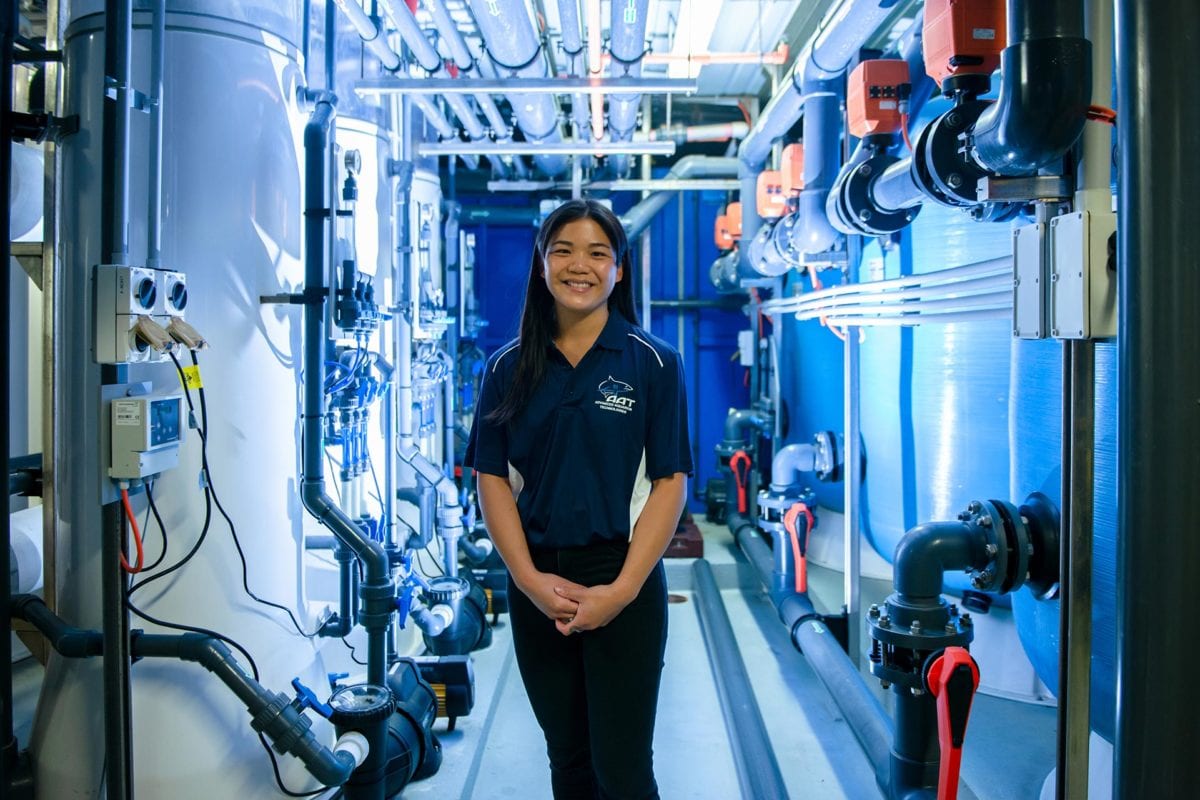
We hope this article is a source of inspiration for school-children wondering how to turn a love of marine animals, coastal habitats and the ocean into a rewarding career, and attract even more talented women into the zoo and aquarium industry.
So, Alison, you’re an aquarist, but you work in a hospital. That’s unusual. What’s the story?
Yes, it is very unusual. So, believe it or not, within the Royal Children’s Hospital in Melbourne is an enormous, two-storey cylindrical aquarium. The bottom of the aquarium can be viewed in the emergency department on the lower ground floor, and it goes all the way up into the main foyer on the next storey above.
The aquarium is quite beautiful, contains about 400 fish and it plays an important role in helping the children feel more comfortable in a hospital setting.
The hospital outsources all aspects of managing the aquarium to the company I work for – Advanced Aquarium Technologies (AAT). As one of AAT’s Managing Aquarist’s, I oversee all aspects of the aquarium at the hospital.
What are your responsibilities?
My primary focus is the health and well-being of the fish. We have many species including pufferfish, unicornfish, angelfish, blue tangs, anemone fish for the Nemo and Dory fans, four bamboo sharks and a honeycomb moray eel. The undisputed crowd favourite is Gary, a humphead wrasse – he’s enormous and quite entertaining.
As you can imagine, my job involves many animal husbandry tasks, such as preparing food, feeding the fish, researching their diets, adapting to new information and observing the fish’s behaviour.
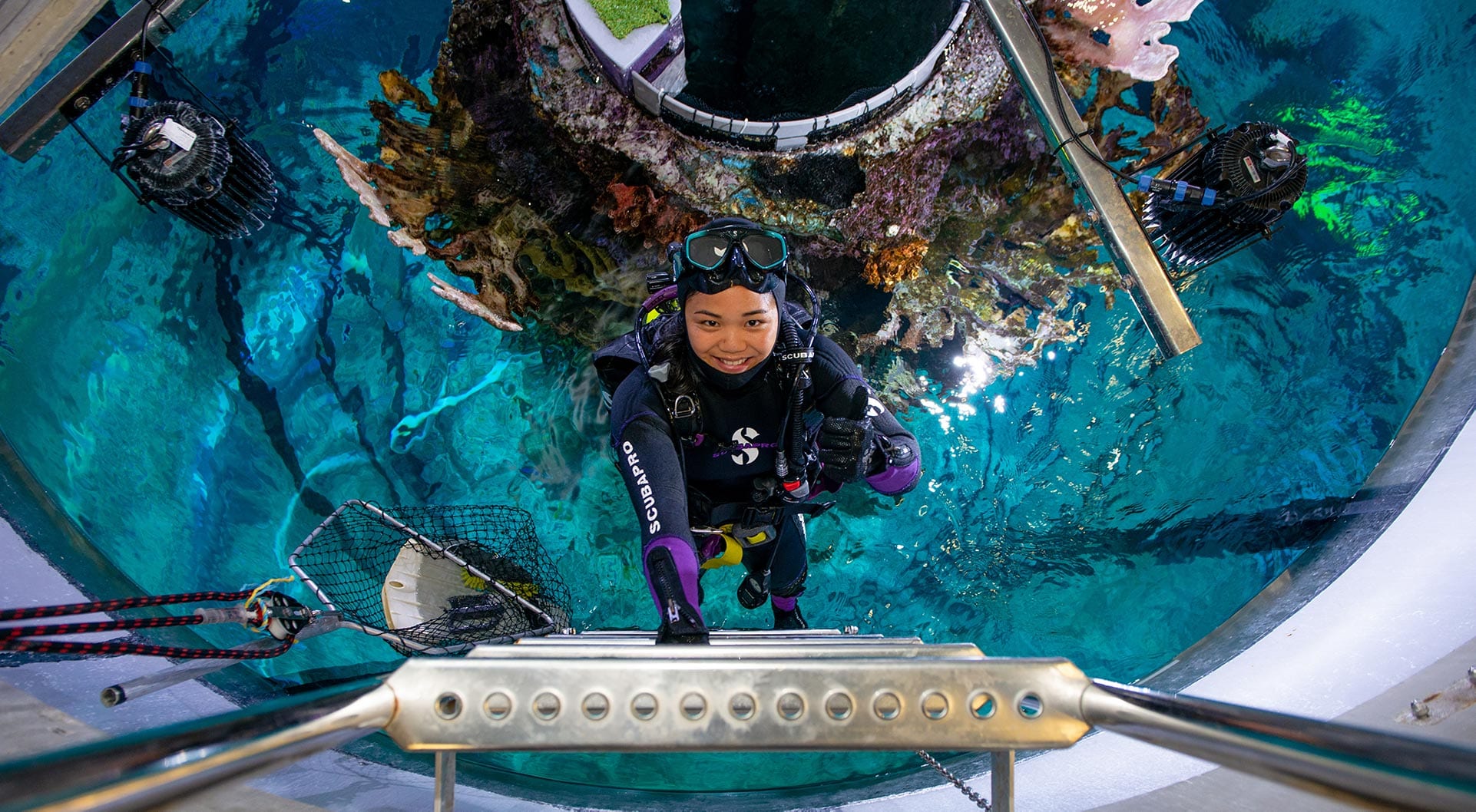
The aquarium contains 130,000 litres of water. As the aquarist, it is also my job to ensure that the water is continuously moving, filtered, sanitised and maintained at just the right temperature and salinity. To do this, I manage and operate the aquarium’s life support system.
Throughout everything, my most crucial responsibility is the safety of our staff – especially when we are diving – as well as the safety of everyone else in the hospital. So I monitor and implement our OH&S policies too.
Last but by no means least, I also manage and maintain relationships with our primary stakeholders, including the hospital itself, our suppliers and my colleagues at Advanced Aquarium Technologies.
How often do you dive into the aquarium?
We dive every day to vacuum and scrub the tank, clean the acrylic, hand-feed certain species – to make sure they get the nutrition they need – and enrich the animal’s lives with some interactions.
We’re very conscious that the children in the hospital watch us while we are underwater, and we make a point of giving them a wave or by target-feeding certain species in areas of the tank where the children get a good view. It feels great to provide the children with some enjoyable moments while they are in hospital.
What do you like most about being an aquarist?
Every day is different, whether it is a shark resting on your head, a pufferfish following your every move, or finding a solution to a challenging problem. Beyond working with the animals and going for a daily dive, it is lovely to be able to put a smile on a child’s face.
What’s involved in managing the water-quality?
We test and monitor the water to ensure it is perfect, so the fish will thrive and grow!
I also manage the life support system – tucked out of sight – which features pumps, sand filters, biological filters, foam fractionators and water-sanitisation equipment.
How did you become an aquarist? What skills do you need?
Every aquarist has a different journey, usually involving a combination of formal training, research, volunteer-work and practical experience in the field.
For example, after school, I completed a Bachelor of Science majoring in Marine and Conservation Biology. I got my dive certification and a part-time job at an aquarium while I was a student.
I have also volunteered on numerous marine conservation and research projects in South East Asia. For example, I ran dive research studies on coral reefs, sea horses, manta rays and fish populations.
I got my PADI dive instructor certification whilst working on whale shark tours in Western Australia.
I completed a certificate II in Aquaculture and worked in a hatchery/ocean sea cages in Geraldton WA.
Then I worked on an abalone farm, in regional Victoria, before I moved to Melbourne where I now work at the Royal Children’s Hospital aquarium.
What attracted or inspired you to a career working with marine ecosystems in the first place?
I grew up in Perth, mainly, and Indonesia earlier in my childhood. Both places had great impact on my attraction to coastlines and marine life. My fascination in the ocean motivated me to get my dive certification when I turned 18.
I am also incredibly passionate about preserving and conserving our marine ecosystems. We are so lucky – in Australia – to have vast and diverse marine habitats on our doorstep. I am very interested in educating the community about the beauty of the ocean and the benefits it brings to us.
What do you consider to be your biggest professional achievement?
My most significant professional achievement was working on the initial commissioning of the Royal Children’s Hospital aquarium. It pushed me out of my comfort zone and challenged my pre-existing technical knowledge.
I enjoyed learning from my seniors, got really good at problem-solving and challenged myself to get the most out of this unique opportunity.
If you were explaining to a group of school-aged children why a career in marine science or the aquarium industry is worth considering, what would you say?
I would say to follow your passions. If you are interested in marine life, get a kick out of working with animals, can solve problems, care about conservation, like taking the initiative, and enjoy ‘hands on’ skills, then marine science and the aquarium industry are a perfect fit!
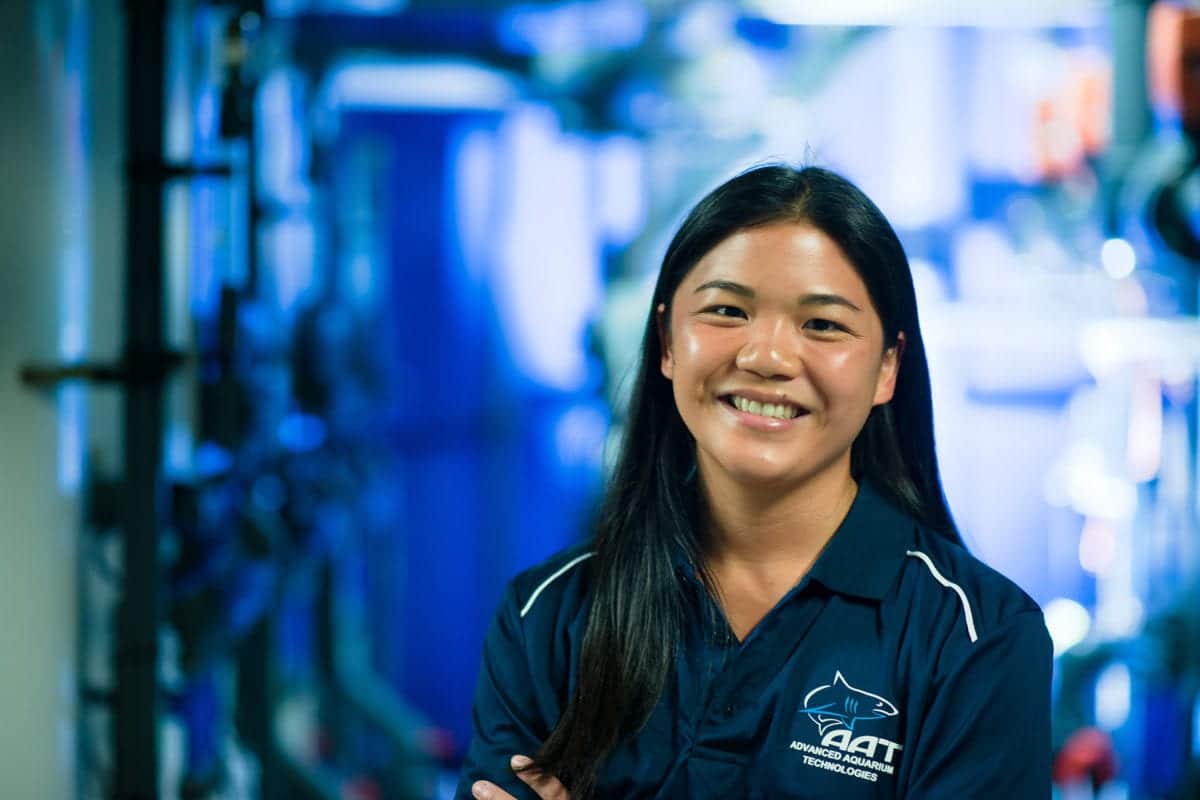
PHOTO CREDIT: WITH THANKS TO THE ROYAL CHILDREN’S HOSPITAL MELBOURNE FOR THE LOVELY PHOTOGRAPHS
SHOUT OUT ALSO TO SCUBAPRO FOR THEIR SPONSORSHIP OF DIVE GEAR AT THE ROYAL CHILDREN’S HOSPITAL AQUARIUM
